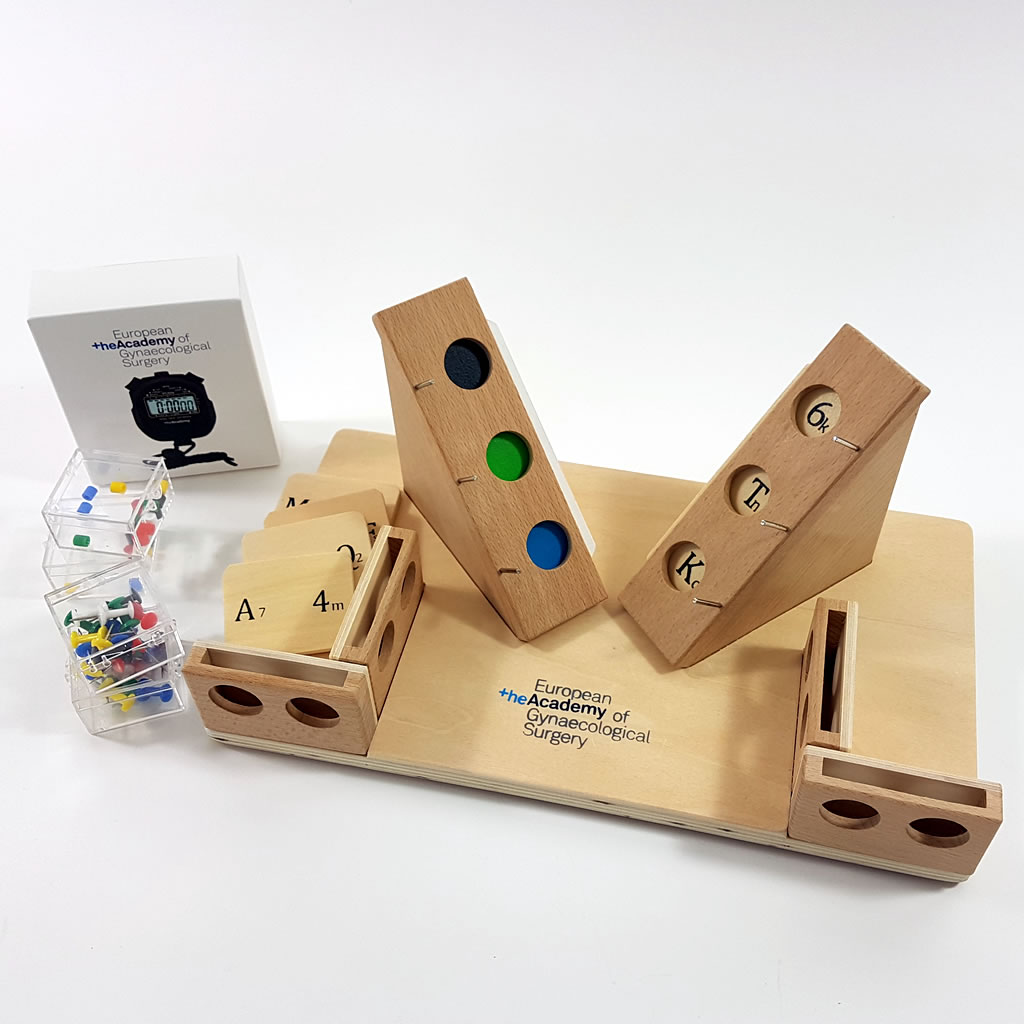LASTT
Laparoscopic Skills Training and Testing method
LASTT is a validated practical test to measure the competence level of an individual in basic laparoscopic psychomotor skills in the specific uterine environment: camera handling, hand-eye coordination and bi-manual coordination.
It uses the LASTT model, representing the spatial distribution and orientation of the different planes and angles of a female pelvis, which is placed in a pelvic trainer.
LASTT is one for the three exercises as used in the practical skill assessment of the GESEA Programme. The LASTT Training Package is available from ID Trust Medical.
Exercise 1: Camera Handling
The aim of the first exercise is to navigate the camera with the 30° optic to visualise all important areas of the pelvis.
Procedure:
- Start your search by locating the first position "1a"
- Zoom in to position the target circle on the small character so that it is fully shown and readable
- Only proceed when your partner can read the small character
- Search and locate the corresponding capital character (A)
- Continue this sequence until you reach the last position with small character ‘end’
Exercise 2: Hand-eye Coordination
The aim of the second exercise is to evaluate the ability to navigate the camera with the non-dominant hand and to handle a forceps with the dominant hand.
Procedure:
- Position one corresponding coloured ring on each nail
- If you drop an object, you can use the second ring or you may re-grasp, as long as you can find the object within the endoscopic boundaries
Exercise 3: Bi-manual Coordination
The aim of the third exercise is to evaluate the ability to handle two forceps simultaneously with the dominant hand and the non-dominant hand.
Procedure:
- Position one coloured pin in each corresponding circle
- Grasp plastic part of the pin with non-dominant hand and lift pin up
- While elevated, pass the pin to the dominant hand by grasping the metal part of the pin
- Place the pin in the corresponding coloured circle and repeat for all colours
- If the pin is dropped, use the second pin

